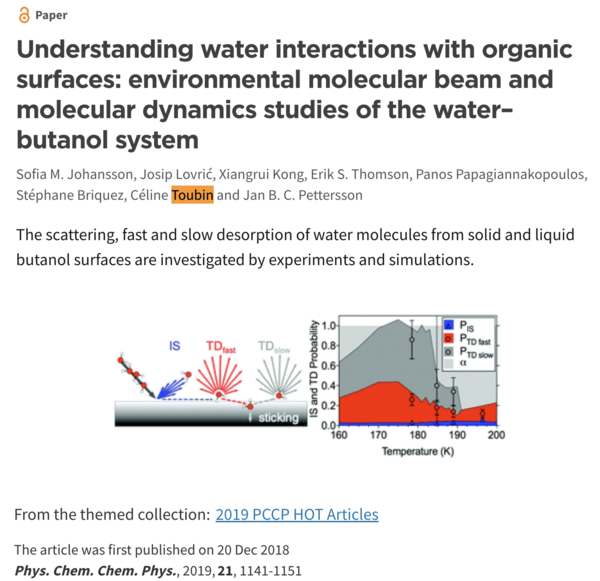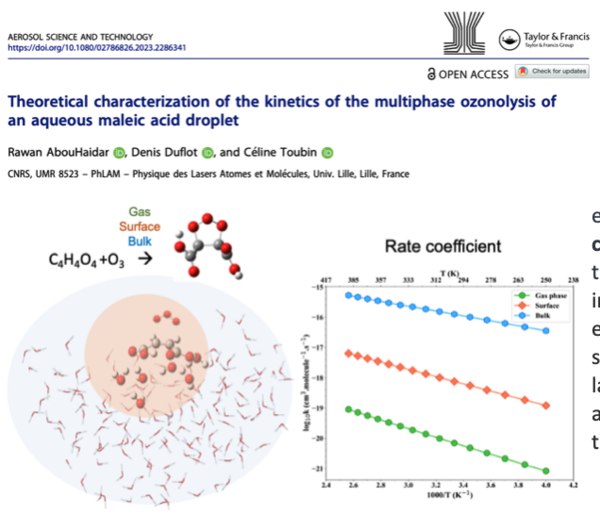Molecular level description of aerosols: From physical to chemical processes

Modeling heterogeneous chemical reactions and physical transformations in the complex multiphase environment of the atmosphere at the molecular level poses two significant challenges.

- Firstly, establishing a direct comparison with experimental data, especially considering timescales and size differences, is essential. The collaborative work with Jan B. C. Pettersson's team in Gothenburg, Sweden, serves as an exemplary illustration of how a combination of state of the environmental molecular beam experiments and molecular dynamics (MD) simulations can offer detailed insights how the adsorption/desorption of water molecules is influenced by the phase state.
https://doi.org/10.1039/C8CP04151B

- Secondly, the study of reactivity requires precise quantum descriptions of both the reaction mechanism and the explicit environment. As an example, ONIOM QM/QM’ calculations have shown that the presence of interfacial water molecules enhances the initial reaction step of MA + O3, with a larger rate coefficient at the air–water interface than in the gas phase.
https://doi.org/10.1080/02786826.2023.2286341
